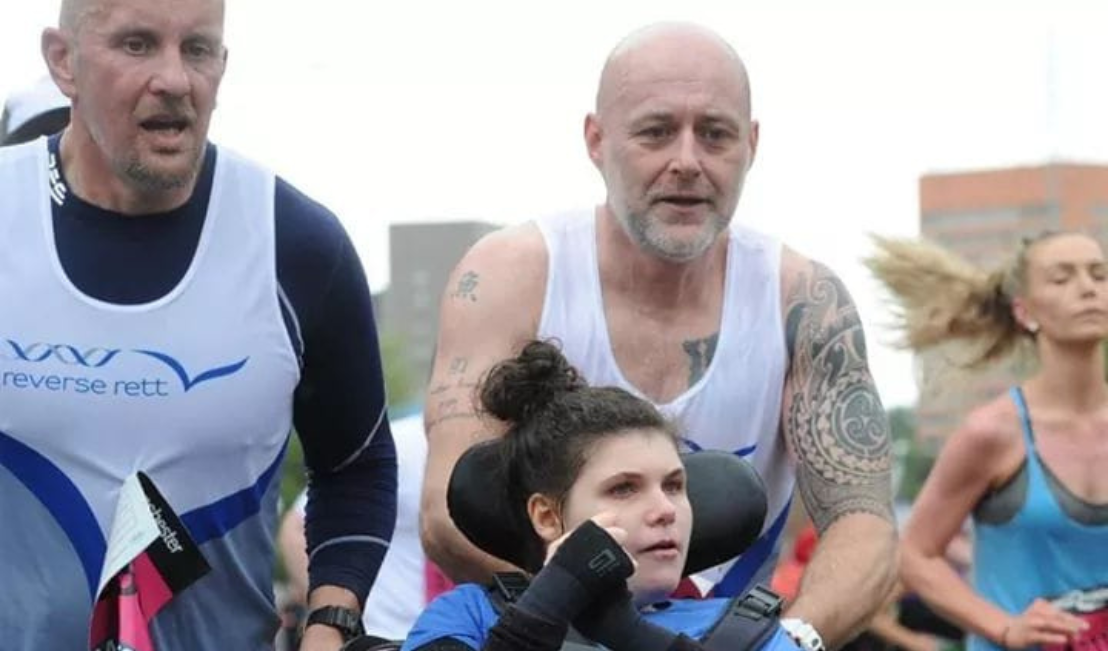My Top 10 Fundraising Tips

by Andy Stevenson
I recently held my first fundraising workshop on Zoom. Titled ‘The Art of Fundraising’ where I shared my experience of 25 years of taking on challenges for charity. It was aimed at both people new to fundraising who were maybe a little daunted and people who have been fundraising for years but were looking for a fresh approach.
I was joined by two parents of children with Rett syndrome, Tanya White, whose daughter, Layla was diagnosed in May last year and Catherine Sim whose daughter, Georgina is 28. Both had very different approaches to making their challenges a success during 2023.
You can watch the session at the Reverse Rett YouTube channel by following this link but for now here are my Top 10 fundraising tips.
1. Tell your Story – This is the key to making your fundraiser a success. Tell your potential supporters why you are taking on the challenge and why it’s important to you. Share photos and information of the person with Rett syndrome that you care about.
2. Rett syndrome research – There is a lot to be excited about with the imminent start of two gene therapy clinical trials here in the UK. People love being involved in a success story and who wouldn’t want to contribute towards making Rett the first neurological disease to be cured.
3. Play to your strengths on Facebook – if you are active on social media then be sure to share your story regularly. Due to the algorithms only around 20% of your friends will see your first post on their news feed. Make it stand out so they don’t just scroll past, use a photo, a happy, smiley one works the best and put your fundraising link at the bottom of the text. NEVER just share a link as that is taking people away from the platform, this ensures most of your friends won’t see it. The more you share the more people you’ll reach so don’t be shy.
4. Not active on social media? – It’s hard to escape it but if you avoid social media like the plague then you need to think about the best way to approach people. The old-fashioned sponsor form is still a great way to fundraise. If you work from home and don’t see many people face to face then email or text them your link with the reasons you need their help, not many people fail to respond to a personal plea.
5. Mix up your posts – Tell them about your training. Be honest, none of us are athletes and we are trying to fit this in alongside everything else in life, explain individual symtoms that our children have to live with. Even if you don’t get a donation from every post you are still making people aware of Rett syndrome and all it brings.
6. Think outside of the box – If getting people to donate is difficult for you then offer them something instead. Hold a cake bake at work, a quiz night in the local pub or approach your child’s school and ask if they can hold a non-uniform day in support of your efforts.
7. Always say thank you – It should go without saying but often people allow the automated message to express their gratitude for them. Always give an individual thank you to each person who stands with you and donates to your cause.
8. Examine your own behaviour – What makes you stop scrolling and grabs your attention, making you donate to a friend’s fundraiser? Don’t be afraid to copy, it’s the ultimate form of flattery.
9. Fundraising fatigue – Most people who start fundraising feel empowered by it. Most though end up worrying about asking and mention people getting fundraising fatigue. There is nothing to worry about, people will donate or they won’t donate, it’s that simple. Reverse Rett have sent £8M to research since launching and that money was raised by families, their friends and connections doing what they can. The amount raised is irrelevant because added together it’s got us to the point we are at today. So, if you raised £500 last time but only £100 this it doesn’t matter, it all ends up in the same pot and collectively it’s made a difference. If all else fails then look at the person you are fundraising for and ask yourself ‘does she or he have Rett syndrome fatigue’ the answer is undoubtedly YES and that alone will get you setting up your next Just Giving page.
FINALLY and most importantly – Change your mindset, believe it when people tell you that you inspire them or that your person with Rett does. Rather than think ‘I can’t ask again’ think ‘I’m giving people an opportunity to support me.’ We all know that much of the time people can’t help with anything practical if you have a child with Rett syndrome but they can often support your fundraising. They are also inspired by you taking on something like this and are usually happy it’s you doing it rather than them.
I hope some of this information resonates and helps you but please feel free to email me with any questions or if you need help with anything at [email protected]
It’s been a herculean effort from a small group of people to get us this far, we finally have Rett syndrome on the run!